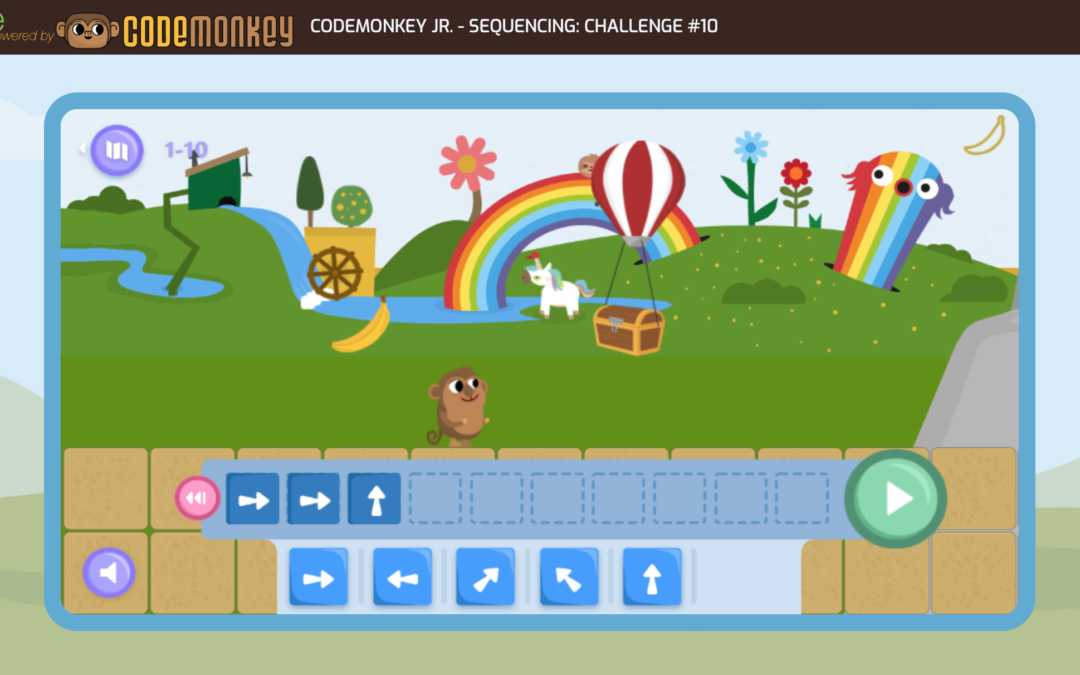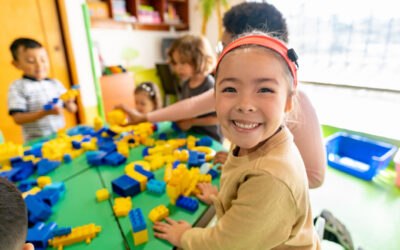It’s becoming common to teach age-appropriate coding skills to kids at school through computer classes. Not only do these programs provide career-ready skills for the future, but they also introduce concepts and techniques that can be utilized in a variety of applications, including problem-solving, comprehension, analysis and more.
6 Coding Skills for Kids for a Successful Coding Program
Below are some of the top coding skills to teach kids. These are age-appropriate skills that can build upon each other to create skills that can be used for increasingly advanced coding projects.
1. Block-Based Coding
One of the first coding skills kids should learn is block-based coding. As presented in the image at the top of this blog, block-based coding is a very basic, visually-based, drag-and-drop coding system. This method of coding allows students to drag and drop certain actions, protocols, or features (usually presented in visual “blocks”) into a sequence that can run without the student having to write text-based code. This is a great introduction to coding since reading is not required, making it a perfect foray into coding for young students.
Block-based coding is a helpful coding skill for kids to learn because it introduces the concepts and processes behind coding without requiring complex coding skills to create successful or meaningful processes.
2. Computational Thinking
An important and far-reaching coding skill a child can learn is computational thinking. While computational thinking doesn’t pertain specifically to coding, it is an important thinking skill that lays the foundation for coding skills. Computational thinking is the concept of taking a complex problem, separating it into smaller pieces that set aside unnecessary or extraneous details, finding patterns, then creating a problem-solving process that uses algorithms, or repeatable actions, that effectively and reliably solve the problem.
While computational thinking may look as though it primarily has application in a digital environment, this process of problem-solving can be used in everyday life. From reading to math to personal health and business, computational thinking is an effective tool kids can take with them for the rest of their lives.
3. CoffeeScript
CoffeeScript is a programming language that leads into JavaScript. JavaScript is an essential, but complicated coding language that enables developers to create dynamic content that can update, change, calculate, manipulate, and validate information.
CoffeeScript is a simplified, more intuitive–and lighter–version of JavaScript that performs many of the same functions. This is a great way to introduce kids to coding skills pertaining to JavaScript. CoffeeScript is used in real-life applications and also helps to inspire JavaScript updates as well as other programming languages.
4. Virtual Robotics
As with game design, virtual robotics culminates coding skills into a hands-on project. These are great exercises for kids to practice coding skills as they are fun and engaging while showing real-world examples of how coding skills can be used in practical applications. Unlike traditional robotics, virtual robotics can be more easily scaled to fit specific skills and applications and at a lower price point.
5. Game Design
Game design culminates the coding skills students learn and helps them apply them in a fun, hands-on way. Students will use computational thinking to create a plan for designing the game, then, depending on the coding program the students are using, will be able to use a combination of introductory coding skills to create or design the game. This is helpful as kids learn coding skills as it shows direct application of skills and helps to generate genuine interest in coding and other career-ready digital skills.
6. Python
Finally, Python is another great coding skill for kids to learn. Python is a general-purpose programming language that is used in real web development, data science, and computer programing environments. Python’s design philosophy emphasizes readability and easy-to-use syntax. This makes it a great real-world coding language for kids and adults alike to learn. Python can be used to build websites and software, process data, complete automated tasks, and more.
Learn More
EasyCode teaches introductory coding skills to students of all ages. Learn more about this program or schedule a free demo by clicking the button below.

Learning.com Team
Staff Writers
Founded in 1999, Learning.com provides educators with solutions to prepare their students with critical digital skills. Our web-based curriculum for grades K-12 engages students as they learn keyboarding, online safety, applied productivity tools, computational thinking, coding and more.
Further Reading
What Is Digital Citizenship? Key Skills & Best Practices for Students
In a world dominated by virtual interactions, being a responsible digital citizen has never been more crucial. Students today grow up with social...
Teaching Children How to Effectively Handle Cyberbullying
In today’s digital age, online safety is a critical concern for children navigating the internet. While the internet provides endless opportunities...
Examples of Abstraction in Everyday Life: How Students Already Use Computational Thinking
Computational thinking, though often perceived as a concept limited to technology or coding, is a valuable problem-solving skill that students...




